He and an orangutan, called Suryia, were were separately filmed ploughing through water using a form of breaststroke
Both animals used a leg movement similar to the breaststroke 'frog kick'
They may be no match for Michael Phelps, but a chimp and orangutan have proved to scientists that apes can swim like humans.
The two captive animals were separately filmed ploughing through water using a form of breaststroke.
Most land mammals swim instinctively by paddling their paws. Scientists believe the peculiar swimming style of humans and apes might be the result of life in the trees.
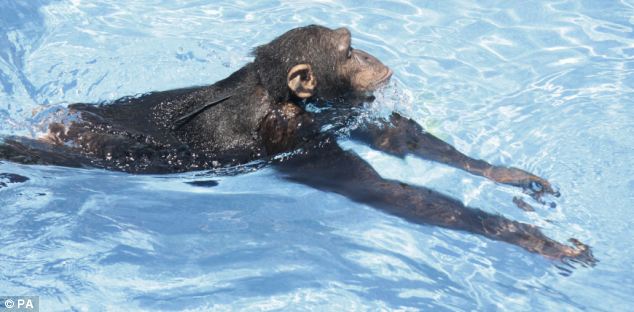
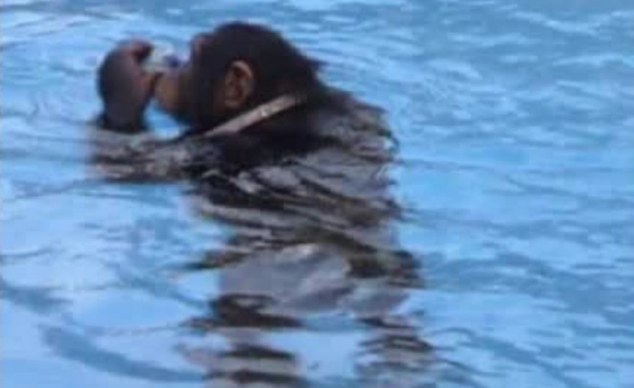
One, a chimpanzee called Cooper, showed off his skills in a swimming pool in Missouri. Not only could he swim, but he enjoyed diving to the bottom of the six-foot deep pool to pick up objects.
'It was very surprising behaviour for an animal that is thought to be very afraid of water,' said researcher Renato Bender, from the University of the Witwatersrand in South Africa.
The orangutan, named Suryia, was filmed at a private zoo in South Carolina swimming freely over a distance of 12 metres (39 feet).
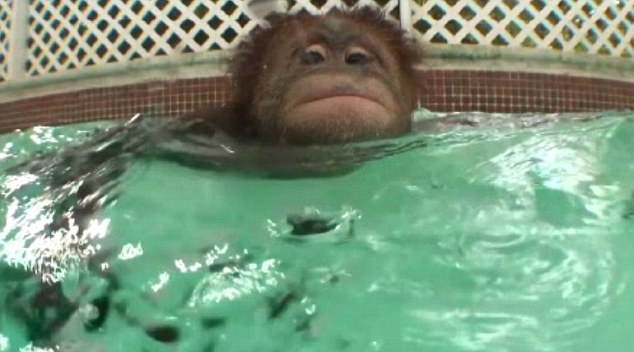
Each had a slightly different style. Cooper moved his hind legs together, but Suryia kicked them out alternately.
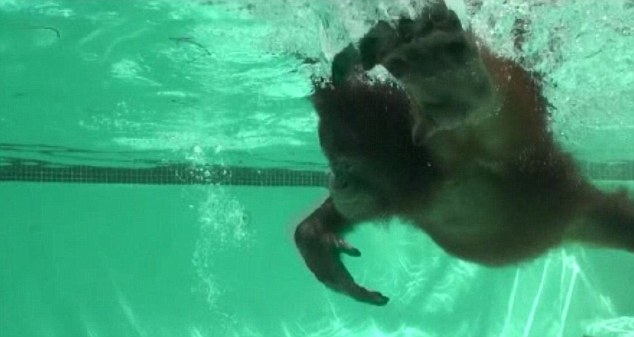
The tree-dwelling ancestors of apes and humans might have lost the instinct to swim, developing other strategies to cross small rivers such as wading upright or using natural bridges.
Co-author Dr Nicole Bender, from the University of Bern in Germany, said: 'The behaviour of the great apes in water has been largely neglected in anthropology. That's one of the reasons why swimming in apes was never before scientifically described, although these animals have otherwise been studied very thoroughly.
'We did find other well-documented cases of swimming and diving apes, but Cooper and Suryia are the only ones we were able to film. We still do not know when the ancestors of humans began to swim and dive regularly.'
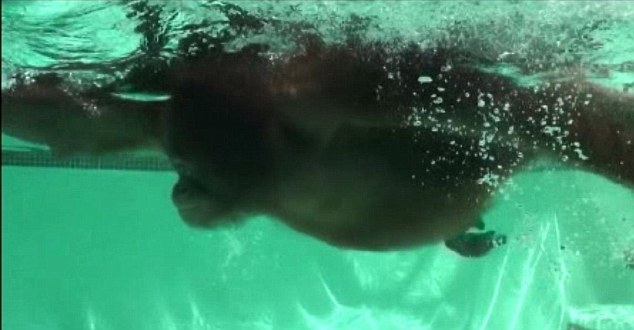



Reader Comments
"We still do not know when the ancestors of humans began to swim and dive regularly.' "
Maybe during times of flood?